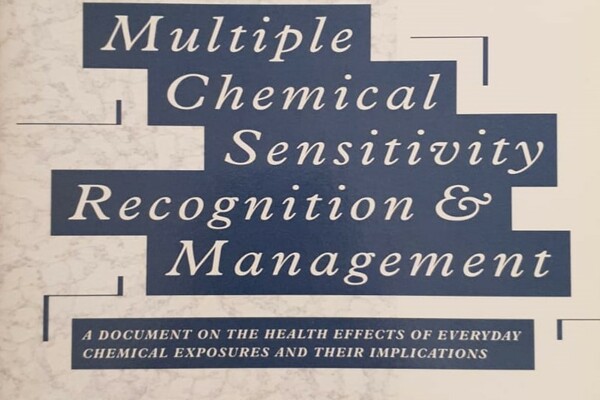A report moderated by KK Eaton and HM Anthony
Download this publication for free
There has been an enormous increase in the production and use of synthetic chemicals and in exposure to pollutants, which has accelerated in the last 50 years. Five million different chemicals are now recognised, and relatively few of the chemicals in use have been adequately tested for toxicity to humankind or the environment.
Long-term ill effects have been reported from chronic exposure to heavy metals and pollutant chemicals. Most individuals report that their late symptoms are exacerbated by ambient exposures to volatile organic chemicals (VOCs) emitted by everyday products (for instance, perfumes, washing powders and cigarette smoke), which were previously tolerated without trouble and indeed often enjoyed. This condition is referred to as multiple chemical sensitivity (MCS).
The genuine nature of MCS has been recognized by officially commissioned reports from independent scientists in the USA and the UK, who have concluded that it is a valid diagnosis and a sometimes disabling condition, although all have stressed the need for further research.
Because of their biological roles, it has been suggested that pesticides (designed to interfere with enzymes) and hormone mimics may have a particular place in inducing MCS.
Patients with MCS are often treated as if their symptoms are psychologically caused. There is no good evidence for this. On the other hand, double-blind challenges have provided positive evidence for the provocation of symptoms by certain chemicals (varying in different patients) at levels too low to be recognised by the patient; challenge has been reported to cause changes in brain activity on SPECT scans. These patients are usually found, on investigation, to be suffering also from the effects of ‘hidden’ allergy (intolerance) to a number of different foods and food additives.
Contents
Introduction
The scale of chemical contamination Is there an unrecognized problem?
(a) General
(b) Medications
(c) Implants
(d) Mercury
(e) Pesticides and related compounds
(f) Gulf War syndrome
(g) Sick-building syndrome
(h) Volatile organic chemical concentrations and late symptoms
(i) The prevalence of multiple chemical sensitivity
Sites potentially involved in reactions to chemicals
Possible mechanisms involved in multiple chemical sensitivity
The relief of chronic illness by methods based on the concept of type B allergy
Has chemical exposure contributed to the increased prevalence of allergies and related illnesses?
People at risk
Diagnosis
(a) General
(b) The history
(c) Challenge
(d) Outcome
Patient management
(a) Avoidance
(b) Nutrition
(c) Sauna detoxification
(d) Chelation therapy
(e) Low-dose desensitization
(f) Psychological therapies
The role of the environmentally controlled unit in multiple chemical sensitivity
Research priorities
Conclusions
Recommendations
(a) General awareness
(b) Medical education
(c) Research
(d) Government action
Appendix 1. Illustrative case reports
Appendix 2. Investigation report
Date: 13 June 2018

